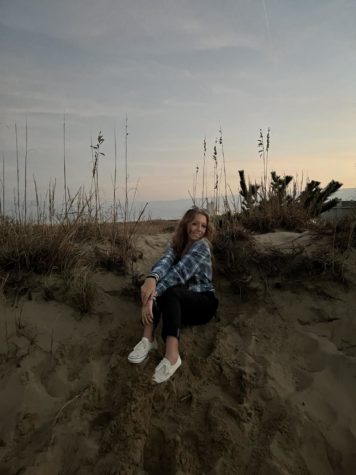Magnet Geology kicks up sand in North Carolina

Magnet Geology students listen as John McCloud speaks of beach replenishment on Dec. 1, 2022.
December 17, 2022
Ocean Lakes Magnet Geology traveled to North Carolina’s coastline for a field trip to learn about wave erosion in coastal areas and ways to prevent it.
The class met at South Nags Head Beach, formerly East Seagal Street, which eroded from a street into a beach.
In addition, they met with professors from East Carolina University, one being John McCloud who spoke of beach replenishments and how high the expenses are. He also spoke of how it disturbs the ecosystem to relocate sand and the organisms inside of it.
Later, they went to the Coastal Studies Institute in Manteo and toured the sound side by pontoon boat; they looked at structures called ‘living shorelines,’ made out of limestone, and put them parallel to the shore, so animals could live there successfully, as well as stop the wave impact from directly hitting the coastline.
Some coasts lose five feet of coastline every year. They were later given interactive models and structures to show how to prevent wave erosion.
At the tail end of the trip, the group headed to Jockey’s Ridge to explore how wind erosion affects the ridge.
“My favorite part was going on a boat at the Coastal Studies Institute. I have never gotten that kind of experience to learn on the water, and it was very fun,” said senior Kaya Dargusch.

